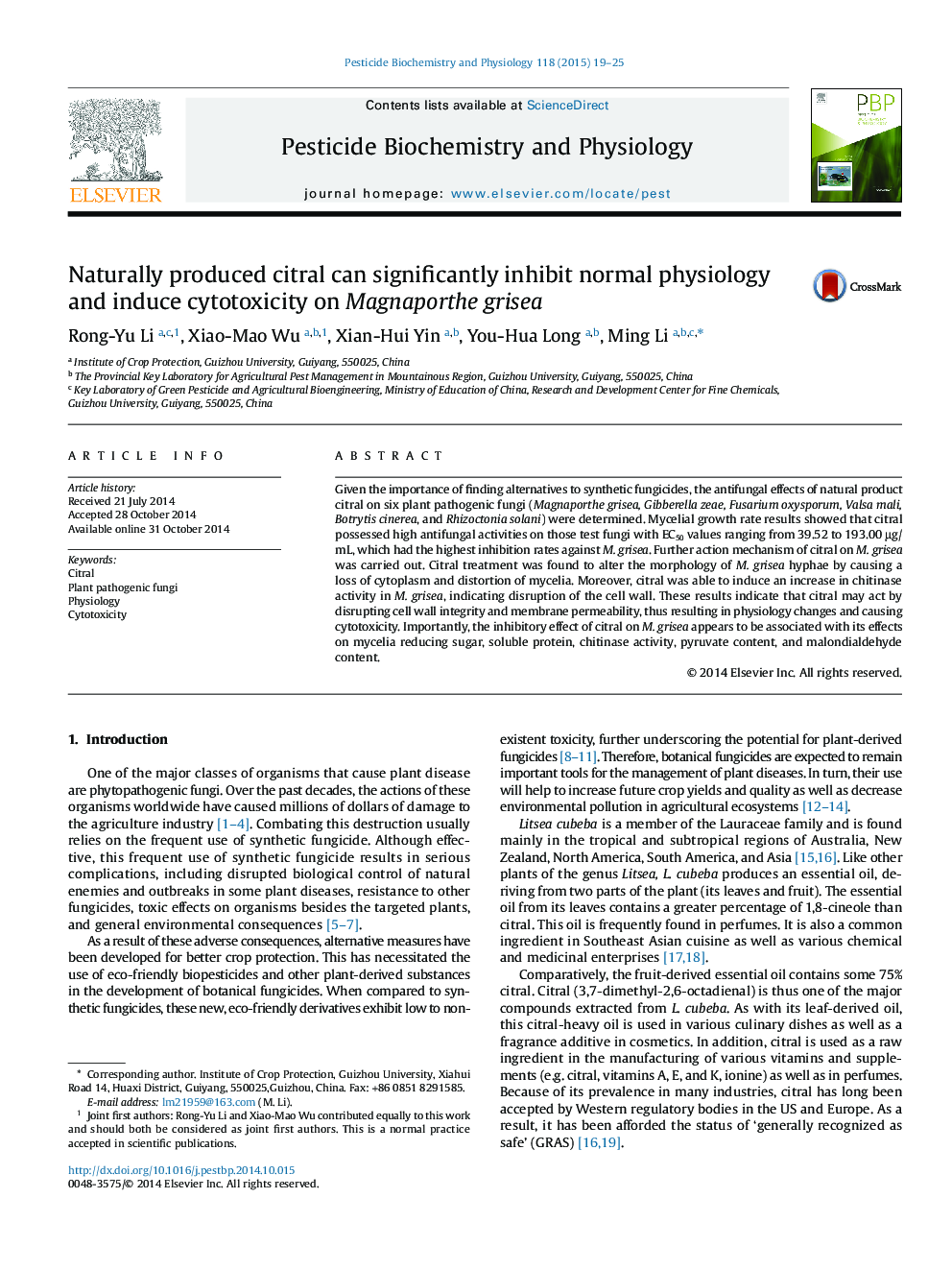| Article ID | Journal | Published Year | Pages | File Type |
|---|---|---|---|---|
| 2009176 | Pesticide Biochemistry and Physiology | 2015 | 7 Pages |
•Citral is a natural product, which is extracted from the Litsea cubeba fruits.•Bioassay results showed that citral possesses a broad spectrum of bioactivity.•Citral may result in physiology changes in Magnaporthe grisea, thus causing cytotoxicity.•Naturally produced citral could be a potential fungicide.
Given the importance of finding alternatives to synthetic fungicides, the antifungal effects of natural product citral on six plant pathogenic fungi (Magnaporthe grisea, Gibberella zeae, Fusarium oxysporum, Valsa mali, Botrytis cinerea, and Rhizoctonia solani) were determined. Mycelial growth rate results showed that citral possessed high antifungal activities on those test fungi with EC50 values ranging from 39.52 to 193.00 µg/mL, which had the highest inhibition rates against M. grisea. Further action mechanism of citral on M. grisea was carried out. Citral treatment was found to alter the morphology of M. grisea hyphae by causing a loss of cytoplasm and distortion of mycelia. Moreover, citral was able to induce an increase in chitinase activity in M. grisea, indicating disruption of the cell wall. These results indicate that citral may act by disrupting cell wall integrity and membrane permeability, thus resulting in physiology changes and causing cytotoxicity. Importantly, the inhibitory effect of citral on M. grisea appears to be associated with its effects on mycelia reducing sugar, soluble protein, chitinase activity, pyruvate content, and malondialdehyde content.
Graphical AbstractFigure optionsDownload full-size imageDownload as PowerPoint slide
